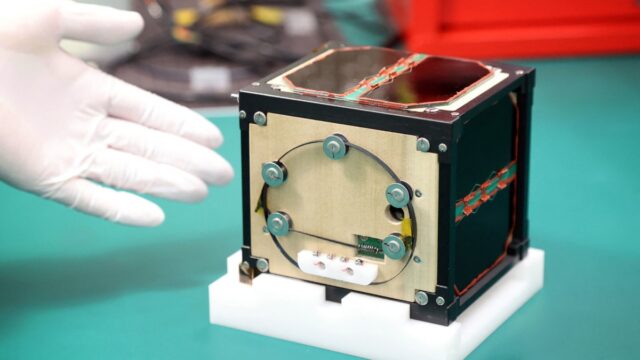LignoSat: The Wooden Satellite Revolution
Explore the groundbreaking launch of LignoSat, the world's first wooden satellite, as it embarks on its mission to the International Space Station, promising significant environmental benefits.
Published November 06, 2024 - 00:11am

Image recovered from guardian.ng
The recent launch of the world's first wooden satellite, named LignoSat, represents a monumental leap in sustainable space technology. Developed by scientists at Kyoto University in collaboration with Sumitomo Forestry, this innovative satellite blasted off aboard a SpaceX Falcon 9 rocket as part of a resupply mission to the International Space Station (ISS). The project aims to test the durability and practicality of wood as an alternative material for satellite construction.
LignoSat is a small, cube-shaped satellite, with each side measuring only 10 centimeters. The structure is primarily composed of wooden panels made from a variety of magnolia, which is traditionally used for making the scabbards of samurai swords. These panels are designed to withstand the harsh conditions of space, including intense temperature fluctuations and radiation exposure. Unlike conventional metallic satellites, LignoSat is expected to completely burn up upon reentry into Earth's atmosphere, thereby avoiding the release of harmful metal particles that can contribute to both environmental pollution and interference in telecommunications.
Japanese developers have expressed optimism about the potential for wooden satellites to revolutionize space technology. Takao Doi, a former astronaut and special professor at Kyoto University, has championed the move towards non-metallic satellites. He emphasizes the environmental benefits of using wood, which does not create harmful debris upon atmospheric reentry, posing a significant advantage over traditional metal-based satellites.
The launch from NASA's Kennedy Space Center in Florida marks the beginning of a month-long journey for LignoSat before it is deployed from the ISS into its orbit. During this time, researchers will monitor the satellite's performance, using data transmitted from space to gauge the effects of environmental stressors on the wooden structure. This information is crucial in assessing the feasibility of wood as a viable material for future aerospace applications, including the potential colonization of the Moon and Mars.
The project is not only an achievement in technological innovation but also signifies a commitment to reducing the environmental footprint of space exploration. As satellite numbers grow exponentially, the challenge of space debris has become more pressing. LignoSat's design presents a promising solution to this issue, demonstrating the potential of natural, sustainable materials in advanced technological applications.
Moreover, this endeavor highlights Japan's leading role in aerospace innovation. By incorporating traditional techniques and local resources, such as the magnolia wood, this project harmonizes history and cutting-edge science. Sumitomo Forestry's involvement underscores the unique synergy between modern space exploration and centuries-old craftsmanship, a testament to the ingenuity required for developing eco-friendly technologies.
The successful deployment and operation of LignoSat will be closely watched by the global scientific community as it seeks to push the boundaries of sustainability in space. With ambitions to use wood for the construction of data centers and other infrastructure, Japanese researchers are pioneering efforts to leverage its natural protective properties against cosmic radiation. If LignoSat passes its trials, it could change the landscape of satellite production, providing a template for how industries might adapt ancient materials for modern challenges.
Ultimately, LignoSat reflects a broader shift towards environmentally conscious technology solutions. As the first of its kind, this wooden satellite could pave the way for a new era in space exploration, where sustainability and responsibility go hand-in-hand with innovation and discovery. The insights gained from this mission could inform future aerospace projects worldwide, promoting a move away from metal reliance and encouraging further exploration of sustainable alternatives.







